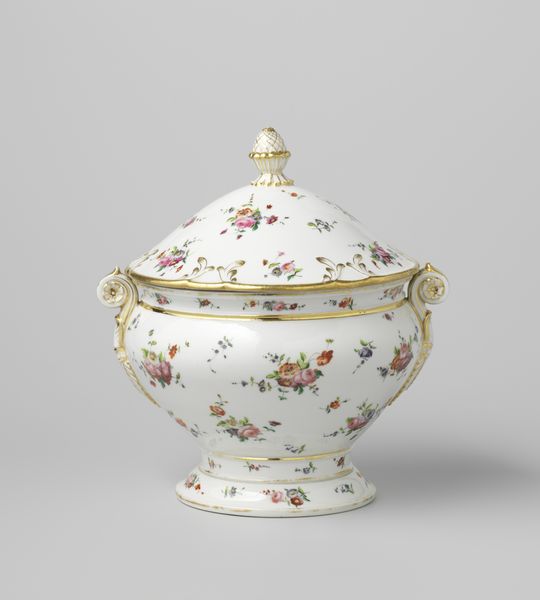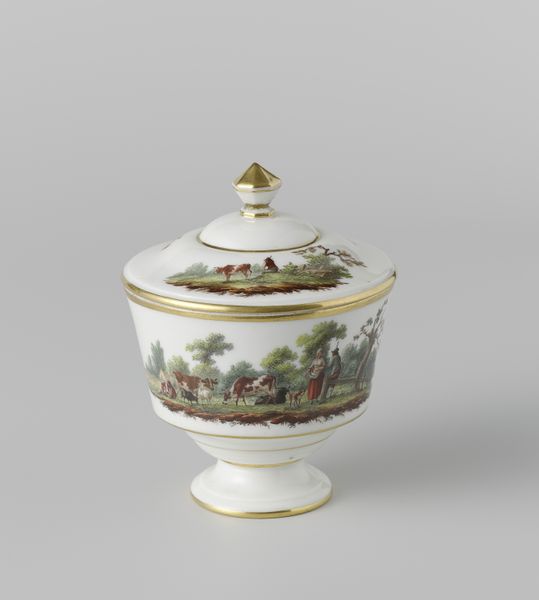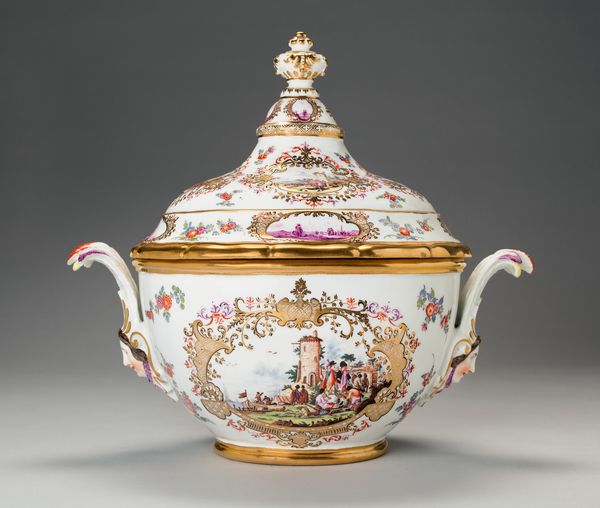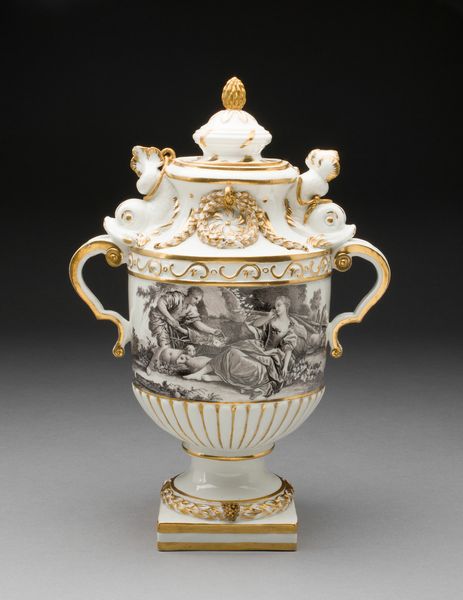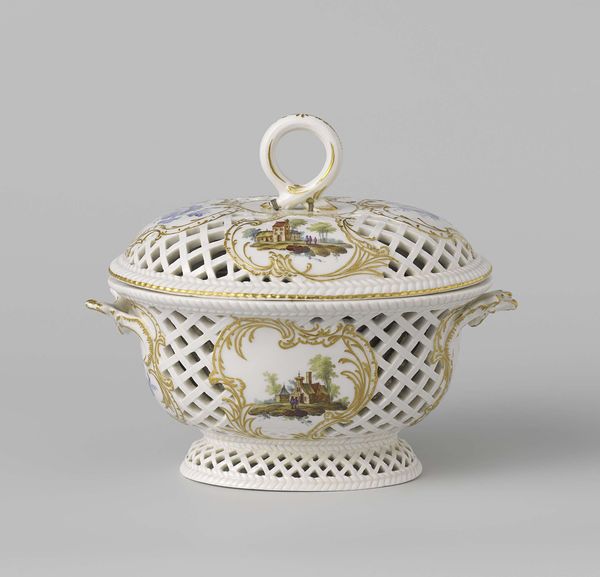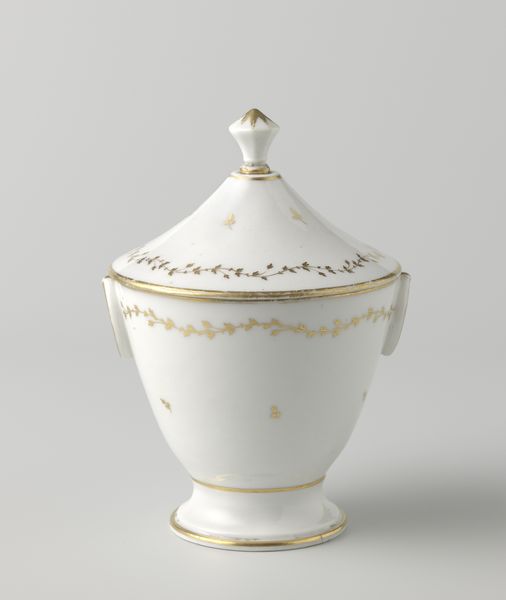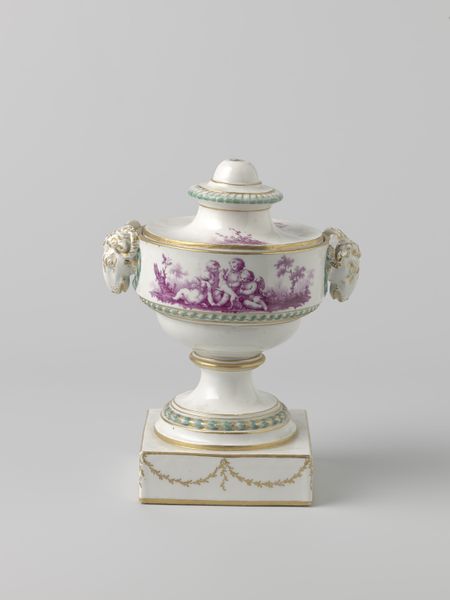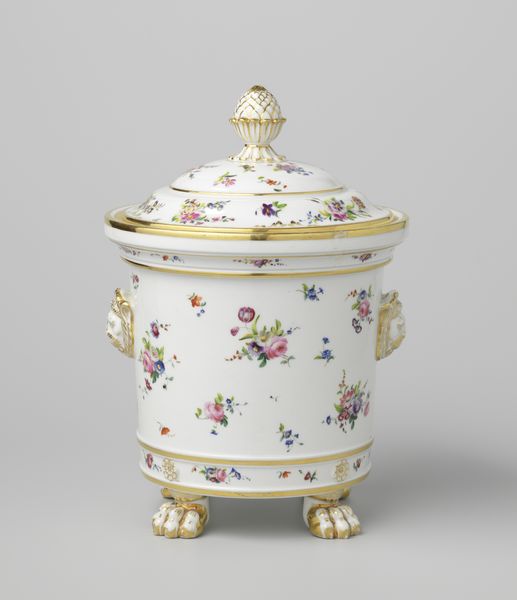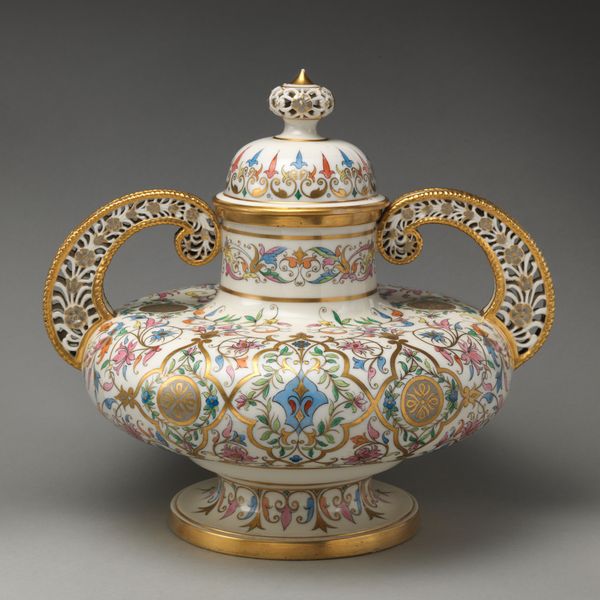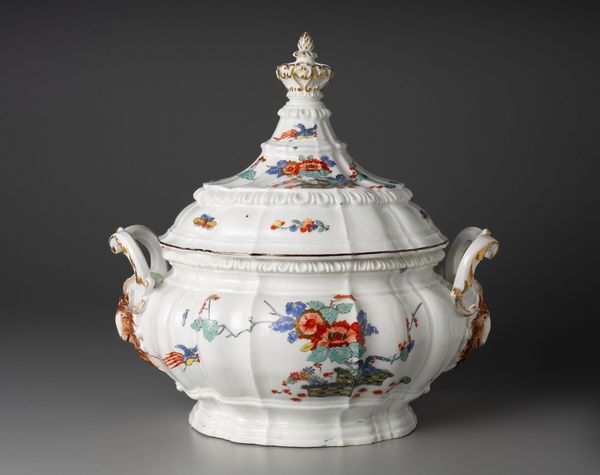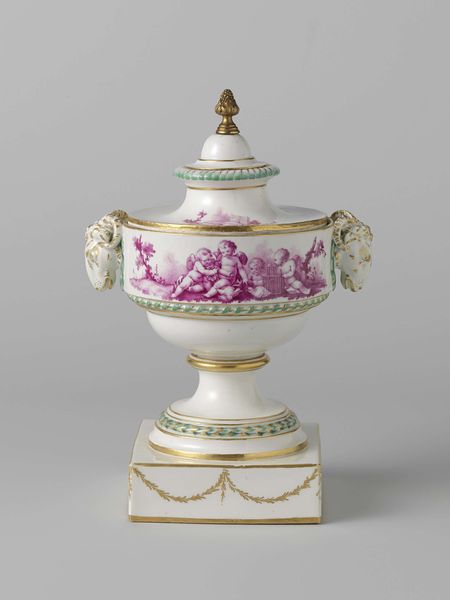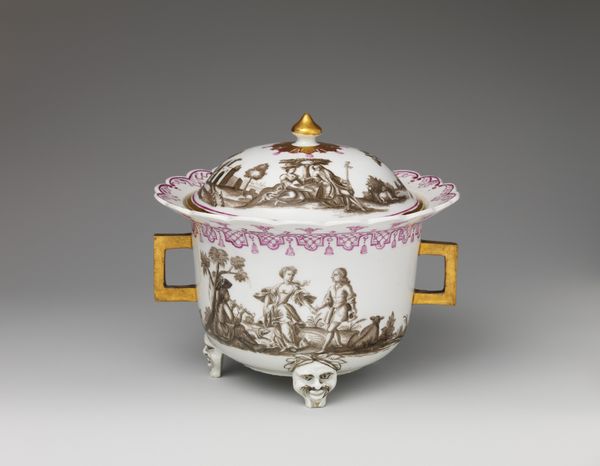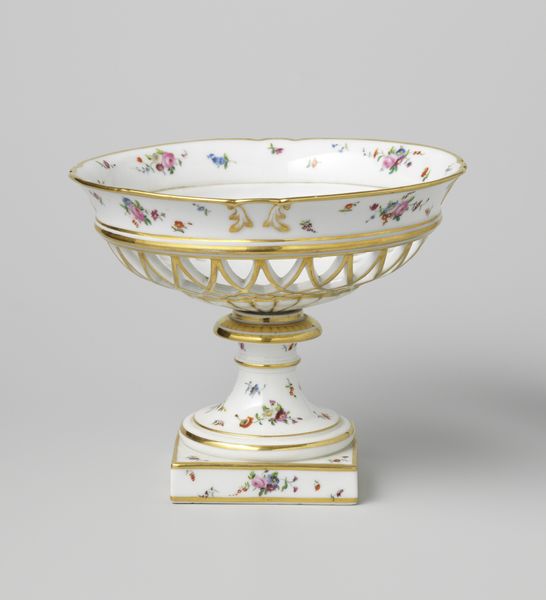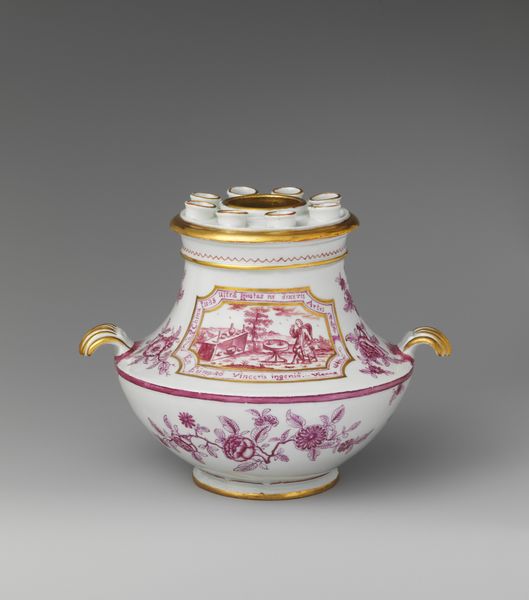
Cover with Chinese scenes, flower sprays and ornamental borders c. 1730 - 1740
0:00
0:00
ceramic
#
ceramic
#
orientalism
#
ceramic
#
decorative-art
#
rococo
Dimensions: height 12.1 cm, diameter 20.9 cm
Copyright: Rijks Museum: Open Domain
This lidded porcelain bowl was made in Vienna by Claudius Innocentius du Paquier. The bowl and lid were first cast in a mold, made of fine white clay. A first, low-temperature firing hardened the forms. Next, artisans hand-painted colorful imagery, including Chinese figures, flower sprays and gilded ornamental borders. These were fired again at a higher temperature to set the colors. Finally, the handles and lid finial, probably cast in bronze, were attached. The process speaks to a highly stratified workshop, where the division of labor allowed for complex, eye-catching results. Porcelain had long been imported to Europe from China, but it was only in the 18th century that Europeans mastered the process for themselves. The addition of Chinese scenes makes this bowl an example of ‘chinoiserie’, a fashionable style that freely mixed European and Asian motifs. Consider the multiple steps of modeling, firing, painting, and assembly that went into this object, and what it says about the ambitions of the Du Paquier manufactory.
Comments
No comments
Be the first to comment and join the conversation on the ultimate creative platform.
